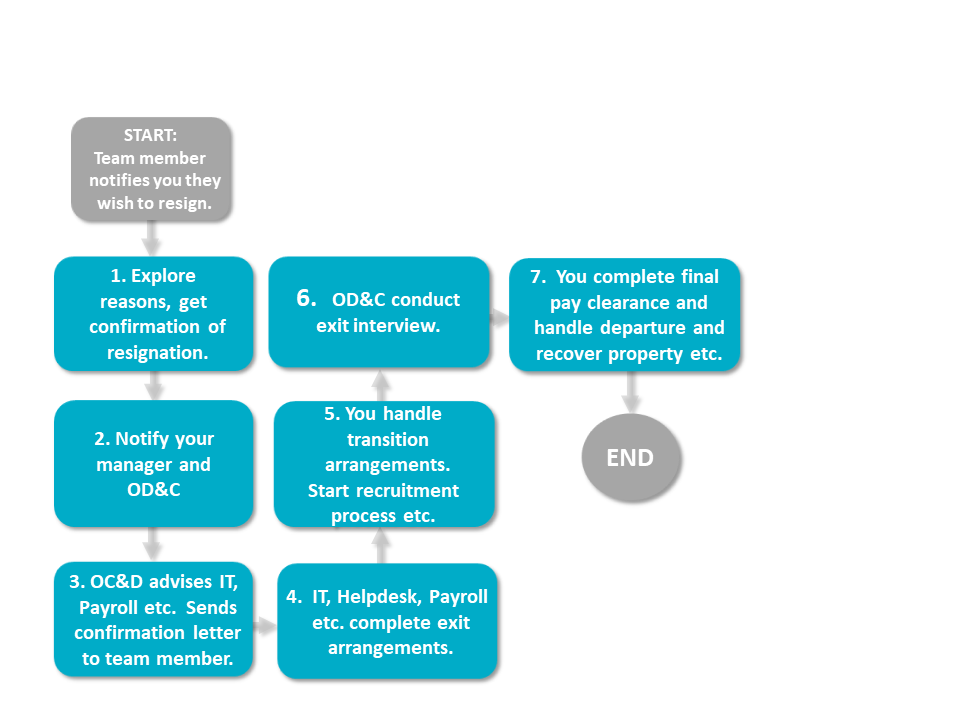
START: Team members are free to resign at will by giving us the required period of notice. Note: the required notice period may vary depending on the role. Check the persons employment agreement.
1. Your first step is to explore the reasons for the resignation and ask for written confirmation specifying a mutually acceptable final date (taking into account their required notice period). Check whether the team member has felt under pressure to resign, if there is any suggestion of bullying, harassment, unreasonable stress etc. If there is, suggest a cooling off period while you investigate those matters. Indicate you are not comfortable accepting the resignation in these circumstances until they have been investigated. Discuss with Organisational Development and Capability how best to proceed. If the person has a constructive approach to their resignation explore, now or before they leave, any reflections on how things could be improved. Exiting people often have great insights to share.
2. Notify your manager and send a copy of the resignation letter to Organisational Development and Capability. Note the final pay clearance form provides a checklist of what must be done/returned before someone leaves.
3. Organisational Development and Capability then send the employee a resignation acknowledgement letter confirming resignation and final date.A copy of this letter goes to Payroll who will prepare final pay. Note: final pay will NOT be released by Payroll until they receive from you (Step 7) the final pay clearance form showing all the necessary actions have been completed e.g. return of keys, access card, vehicle, laptop and IT have closed off computer access). people and Capability will circulate the departure in their next New Starts and Resignations email.
4. You are responsible for developing and implementing a transition plan so that your departing team member’s duties and responsibilities will be covered after their departure. Key issues include considering whether to replace the person (is there an alternative), getting recruitment underway, negotiating with other team members to cover the departing team member’s workload and organising temporary cover from inside or outside the organisation.
5. Organisational Development and Capability will invite your team member to an exit interview. Exit interviews have three purposes. Where resignation is for good cause, they provide an opportunity to constructively review the requirements of the position and identify the skills and personal qualities required of the “ideal” replacement. Secondly, they can reduce the likelihood of a subsequent claim that the team member resigned “in the heat of the moment”. Finally, they may help identify behaviour which deliberately or inadvertently may have caused the team member to resign, and which if the resignation is accepted or not withdrawn, could result in a personal grievance.
6. In the final days before termination you use the final pay clearance form checklist to ensure you collect all necessary keys, access cards etc On the final day, advise IT to decommission computer access. IT will close off access, sign and return the final pay clearance form to you.
7. On the final day you check recovery of keys, access card and any other property your team member may hold and send the final pay clearance form (signed by you) to Payroll who then process the persons final pay. Note: final pay is normally paid on the payday following the persons last day. On departure, your team member may request a written reference or ask you to act as a referee for them.